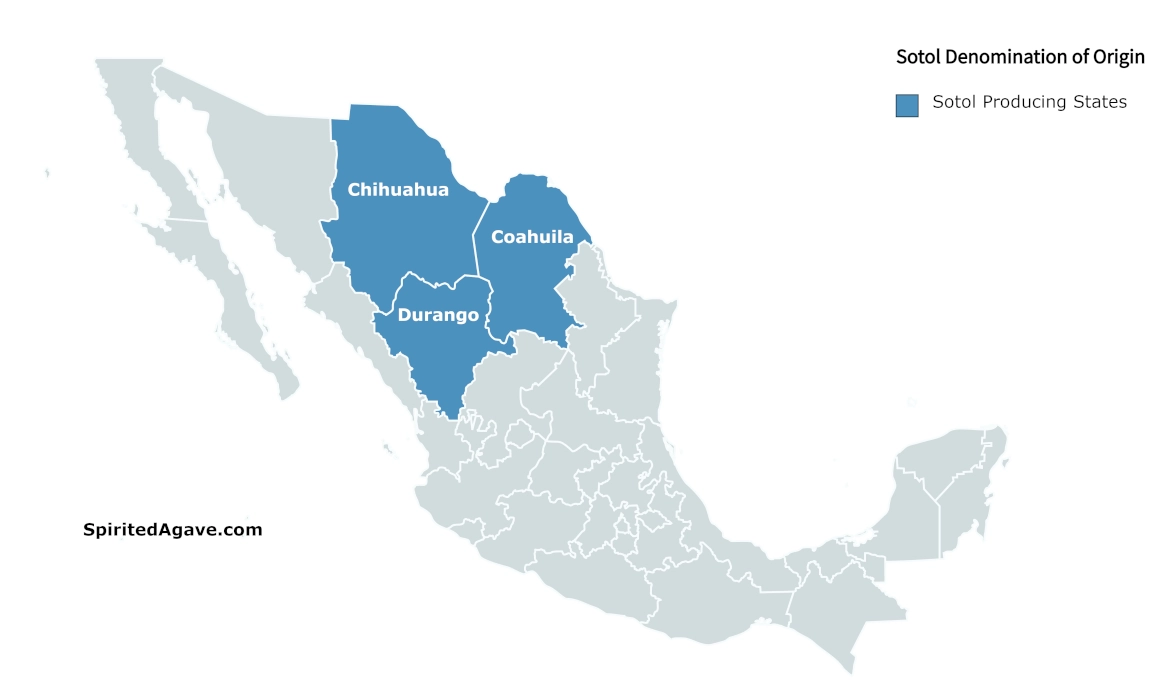If you’re trying to work out how all of Mexico’s agave spirits fit together, this page is for you. The growing number of appellations, or denominations of origin can be confusing. This post will break down the basics of how tequila, mezcal, sotol and others all fit together, and where each can be made.
Mexico’s history of creating drinks from the agave plant goes back thousands of years, well before the Spanish arrived. Indigenous people had a particular reverence for pulque, a drink made from the fermented sap of agave. Following the arrival of the Spanish, distillation methods spread across the country and different regions developed their own nuanced production methods. For hundreds of years most of these distilled products were referred to simply as “mezcal” or “vino de mezcal”.
Since the beginning there have been regional variation in the production methods and species of agave used. In recent years many of the regional practices have been codified into law, creating protected denominations of origin. The first of these was for tequila in 1974, and the most recent was for raicilla in 2019.
The Agave Drink Family Tree
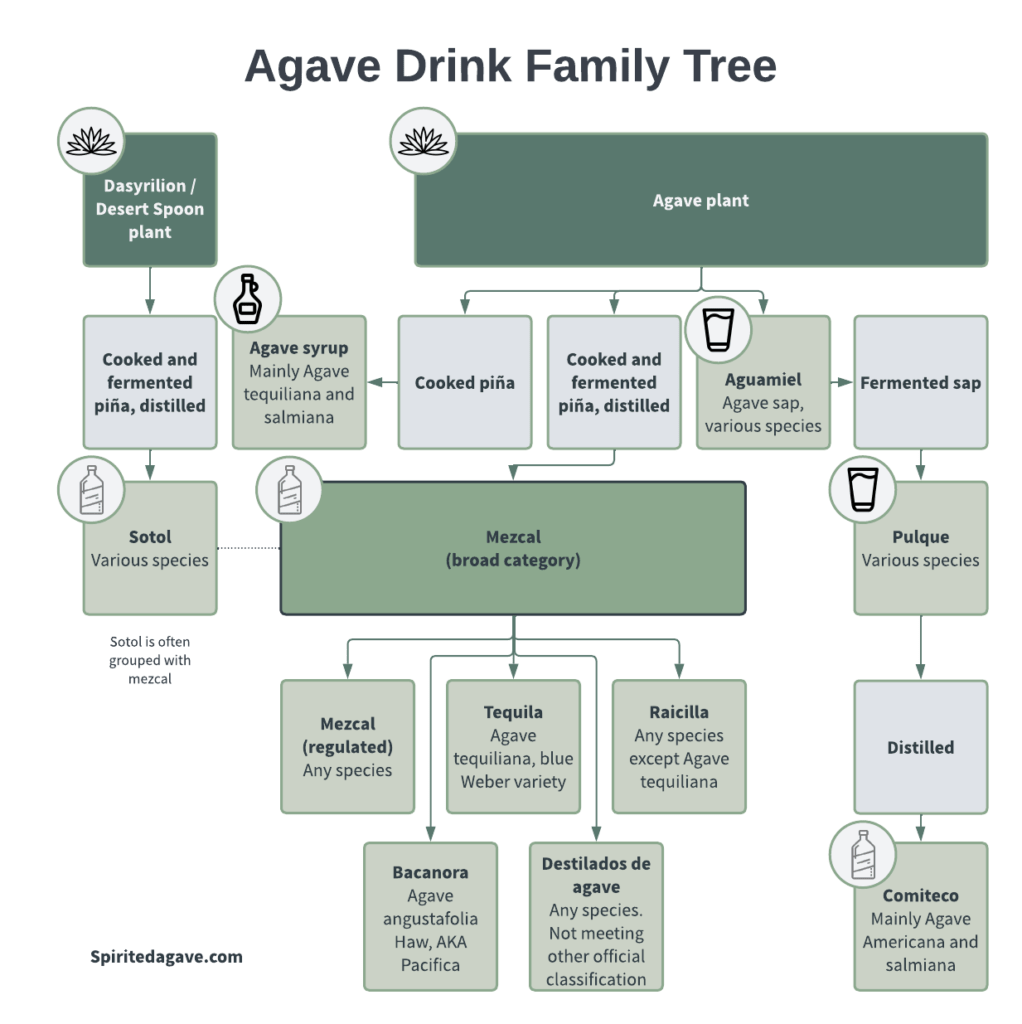
Agave Spirits
The agave plant is the base for a wide variety of drinks and products that take advantage of its high sugar volume. Mezcal can be made from any of the almost 300 species of agave but is mostly made from around 12 different agave species. The most common spirits use the cooked piña (heart) of mature plants to ferment and then distill. Mezcal is the general term for all of these spirits, which locals have been using for generations. Tequila is a subclass of mezcal and can only be made from one species of agave, Agave Tequiliana blue Weber. So while all tequila can be thought of as mezcal, not all mezcal is tequila.
Then there is the “official” mezcal, which is also a subclass of the general category. Since 1994 mezcal has its own denomination of origin, an official government proclamation which protects the name mezcal and its commercial use.
There are many producers of what is essentially mezcal but which hasn’t been officially registered. In these cases the drinks can be marketed as destilados de agave, or agave spirits. Producers may not meet requirements to be sold as mezcal due to location (not being in a defined state or municipality) despite often having a long family history of making mezcal. Others may not simply because they have not gone through the rigorous and possibly unaffordable registration requirements. For small producers in particular official certification may not make sense. This doesn’t mean their product is any lower quality than certified mezcal, often to the contrary.
Other spirits which fit under the general category of mezcal include raicilla and bacanora (both with protected denominations of origin), as well as possibly sotol. Although not made from agave, the history, production methods and base plant (the desert spoon) are similar enough to mezcal that it is often included in the category.
Comiteco is another agave based spirit with a different fermentation process to mezcal. While mezcal is made from cooking the agave piña prior to fermentation, comiteco uses just the fermented sap as the base for distillation.
Other Agave Drinks
Aguamiel, or honey water, is the sap of mature agaves taken from the piña. It is non-alcoholic and is considered highly nutritious. It is a sweet, honey colored liquid harvested by a tlachiquero. Aguamiel is not widely available commercially, but can be purchased direct from the small producers in Mexico and sometimes at markets. If left to ferment, or added to a fermenting batch, the aguamiel becomes alcoholic and turns milky white, becoming pulque. Pulque has a history going back thousands of years, when it was widely used in a ceremonial setting. Pulque still has a strong presence in Mexico, particularly in the central highlands.
Although not a drink, agave syrup is another product of the mature piña. The core is first cooked to make the syrup extraction easier. Agave syrup, sometimes called agave nectar is a common sugar or honey replacement. Plant based eaters in particular value agave syrup as a vegan alternative to honey.
Regional Breakdown of Agave Spirits
Each of the main categories of agave spirits have official restrictions on where they can be produced. In some cases this covers entire states, in others only particular municipalities within states. For instance, tequila can be produced anywhere in Jalisco, but only seven of the 46 municipalities of Guanajuato can produce tequila. For the purposes of the map below, entire states are color-coded with each respective spirt.
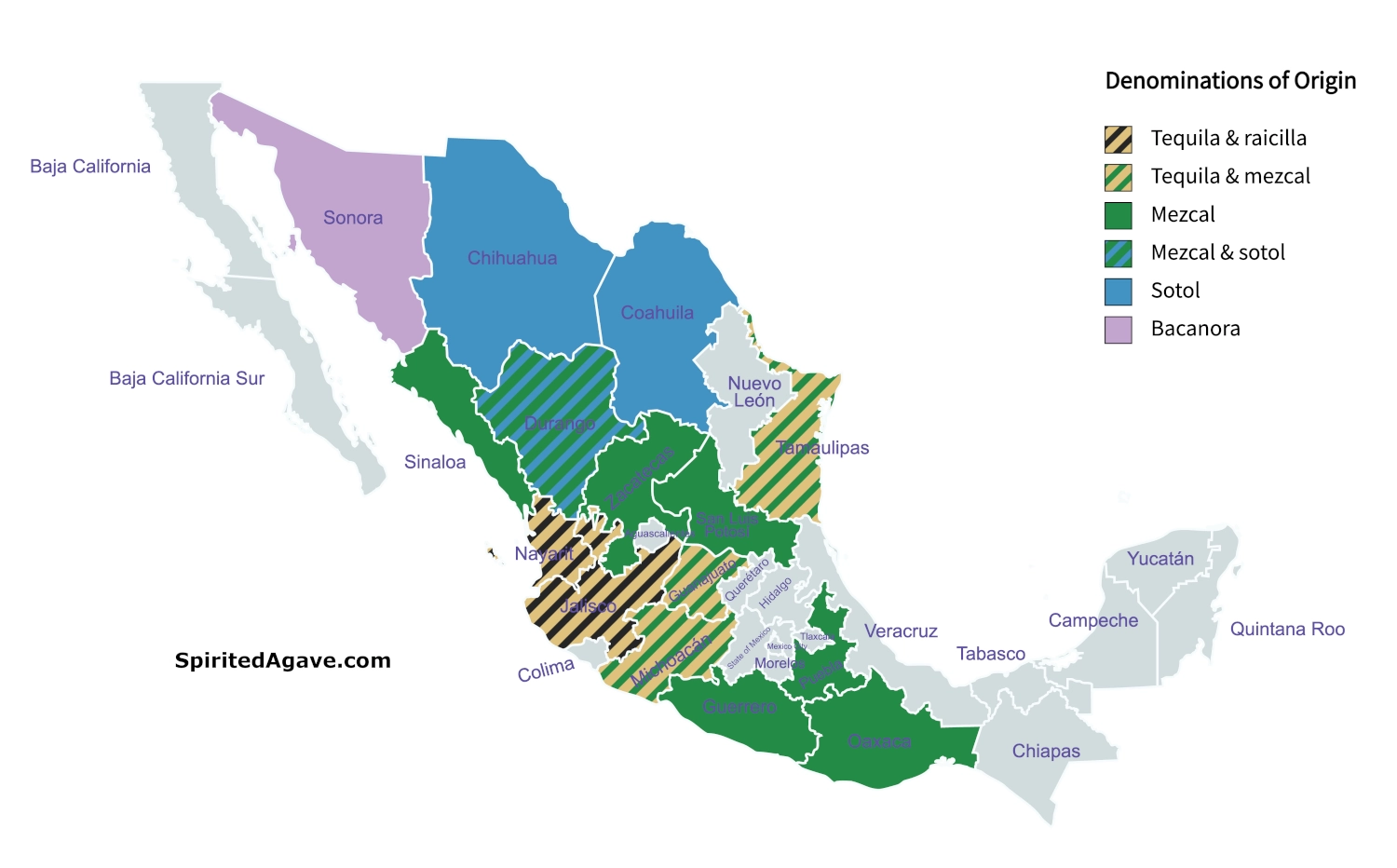
Where states produce more than one agave spirit, for example tequila and mezcal, it is not often the case that the individual municipalities can officially produce both although this is sometimes true. For instance, there are six municipalities in Michoacán which can officially produce both mezcal and tequila.
There are 10 states that can officially produce mezcal, up recently with the latest addition of Sinaloa. Other states have been lobbying to use the official name, including Agua Calientes, Morelos and Estado de Mexico but have so far been unsuccessful. Inclusion in the official denomination of origin means opening up to the fast growing export market for mezcal.
Bacanora can only be produced in the state of Sonora. It is the only agave spirit with just one state producer. It is named after the Sonoran town of the same name.
Comiteco is also named after a town, Comitán in the southern state of Chiapas. However while there are no official restrictions on location, in practice Comiteco is only produced in Chiapas.
There are no location based restrictions on pulque production. Pulque only lasts for a few days before it goes bad. This severely limits the commercial branding potential and any real value in establishing a denomination of origin.
List of Mezcal Producing States
| Mezcal Producing State | Entire State? | Also Produces |
|---|---|---|
| Durango | Yes | Sotol |
| Guanajuato | 2 of 46 municipalities | Tequila |
| Guerrero | Yes | – |
| Michoacán | 29 of 113 municipalities | Tequila |
| Oaxaca | Yes | – |
| Puebla | 116 of 217 municipalities | – |
| San Luis Potosi | Yes | – |
| Sinaloa | 4 of 18 municipalities | – |
| Tamaulipas | 11 of 43 municipalities | Tequila |
| Zacatecas | Yes | – |
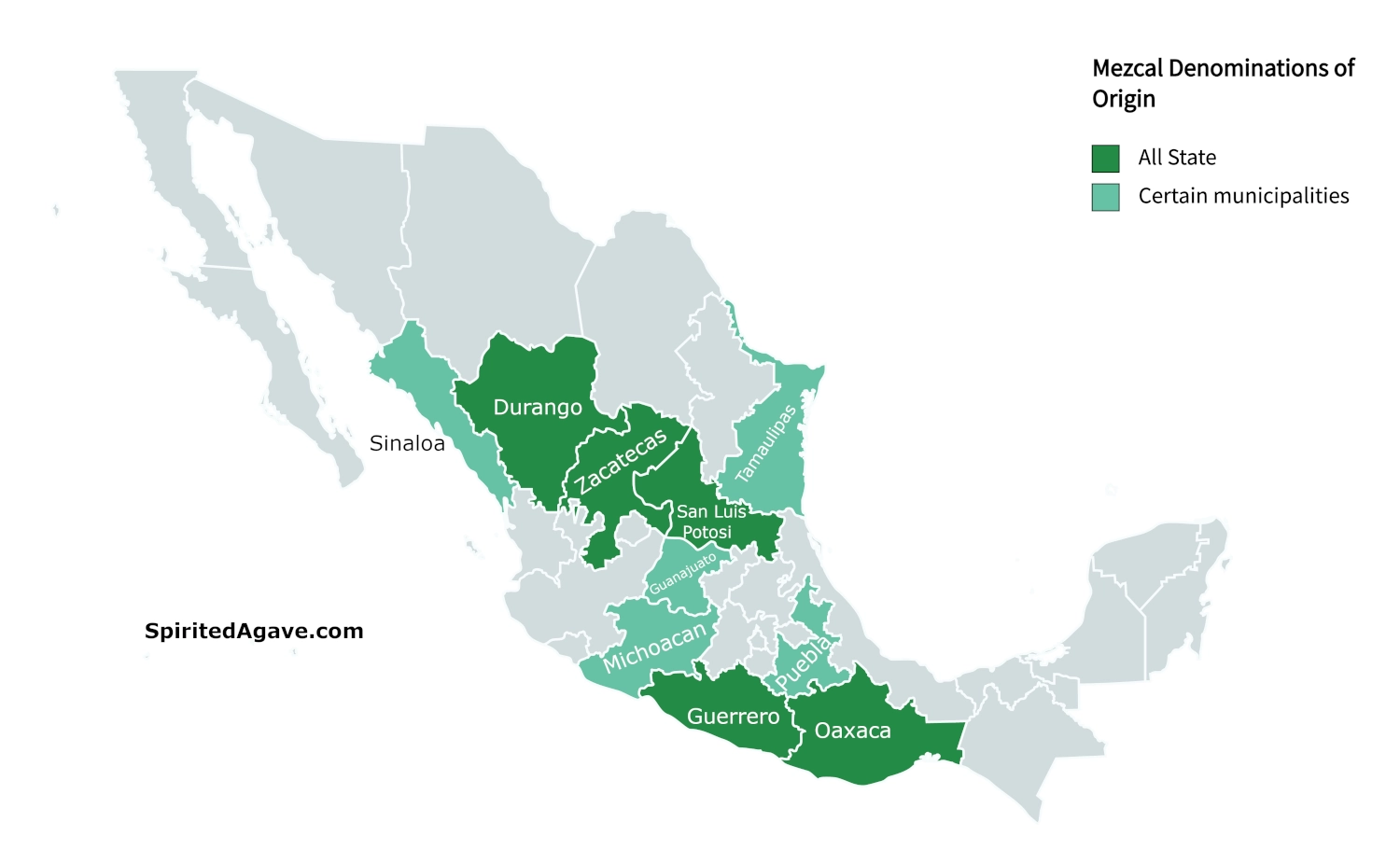
List of Tequila Producing States
| Tequila Producing State | Entire State? | Also Produces |
|---|---|---|
| Guanajuato | 7 of 46 municipalities | Mezcal |
| Jalisco | Yes | Raicilla |
| Michoacán | 30 of 113 municipalities | Mezcal |
| Nayarit | 8 of 20 municipalities | Raicilla |
| Tamaulipas | 11 of 43 municipalities | Mezcal |
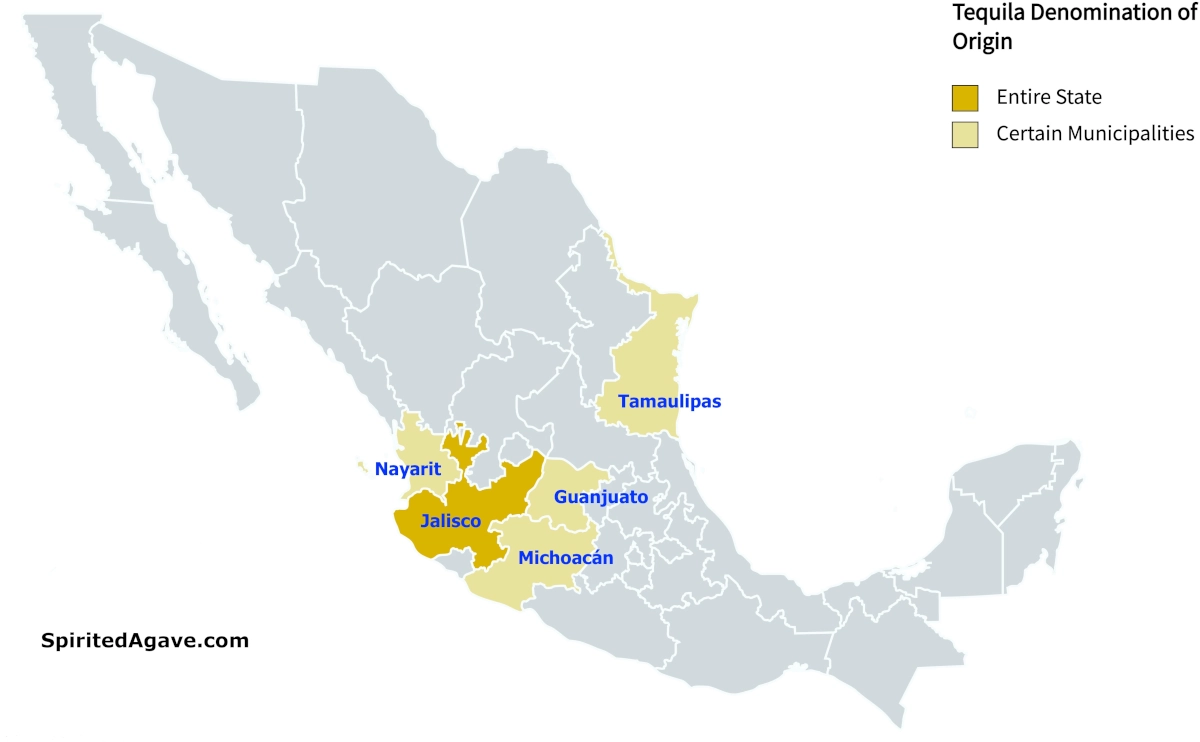
List of Sotol Producing States
| Sotol Producing State | Entire State? | Also Produces |
|---|---|---|
| Chihuahua | Yes | – |
| Coahuila | Yes | – |
| Durango | Yes | Mezcal |
